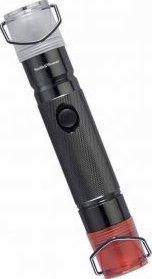Determining backpack weight and more outdoor news
Take a quick look around the outdoors world with a tip, a new piece of gear and more:
Tip of the week
Pack light. That’s the mantra of the backpacker. But what does that mean? Do you really have to cut off the last three inches off your toothbrush’s handle, as some do, to save an ounce or two? Maybe, maybe not. As a general rule, your daypack shouldn’t weigh more than 10 percent of your body weight, and your overnight backpack shouldn’t weigh more than 20 percent of your body weight. That’s 20 and 40 pounds, respectively, for a 200-pound man. So before heading out, gather your gear and weigh it. Then you can start making informed decisions about what and where to trim.
Gear of the week
Gear name: 4-in-1 LED light and lantern
Company: Smith & Wesson (everybodyshops.com/smith-wesson-lantern.html)
Gear type: Flashlight
Product description: Camping — even car camping — is often best enjoyed when you’re not so bogged down with “stuff” that loading and unloading the vehicle becomes a tremendous chore. Yes, comfort is important. But so, too, is practicality and leaving time for fun. In that regard, it’s nice to have gear that can perform multiple functions. And that’s where the Smith & Wesson 4-in-1 light and lantern really shines (pun intended). It is, depending on which function you choose, a flashlight, work light, emergency light or flare. It’s durable, as well. It features a shatterproof, scratch-resistant polymer lens and filters and is made from anodized aerospace aluminum. It comes with a matte black finish.
Available options: This comes with a rare earth magnet and a black carabiner for adaptable hands-free use.
Suggested retail price: $12.99.
Notable: The 4-in-1 LED light and lantern is currently on sale from its $32.99 original price.
Outdoors oddity of the week
Black bears don’t need New Year’s resolutions to lose weight. They sleep it off.
And not in a small way, either. Males can lose 15 percent of their body weight between December and April, and females can drop 40 percent.
That’s quite a few pants sizes.
Though not true hibernators — they can and do sometimes wake up and move around — black bears spend most of the winter in dens. They don’t eat, drink or defecate.
While their heartbeat slows considerably, their body still can consume up to 4,000 calories a day, pulling that energy from stored fat reserves.
Yet, amazingly, they don’t get dehydrated, don’t suffer from hardened arteries (despite sky-high cholesterol levels, by human standards) and suffer no loss of bone strength or muscle cramping.
Hibernating females even wake in January long enough to give birth, then drop back into a semi-slumber while her cubs suckle and find warmth in her heavy fur.
Researchers have been studying bears for all those reasons for years, looking for ways to harness those attributes for human health.
So far, no luck.
Bears will become visible on the landscape again soon. Testosterone levels in males starts rising in March, so they’re often the first to leave dens. All bears are generally out and about by April, with finding food their top priority.
That starts the cycle anew as bears pack on the pounds for next winter’s sleep.
Remove the ads from your TribLIVE reading experience but still support the journalists who create the content with TribLIVE Ad-Free.

